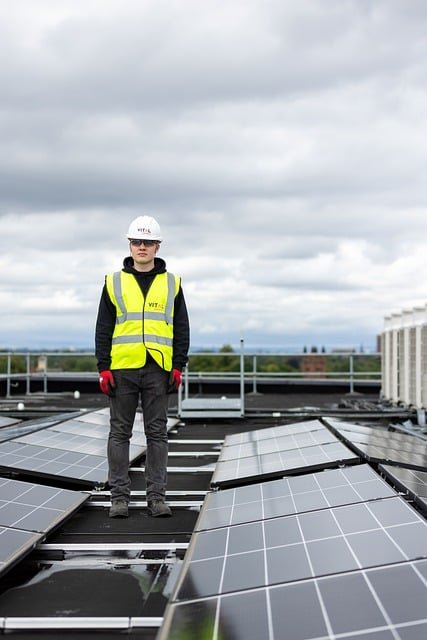Measuring lifecycle emissions for electric radiant setups
This article outlines how to assess lifecycle greenhouse gas emissions for electric radiant systems, covering embodied emissions from panels and installation, operational electricity use, and the role of zoning, controls, and insulation in reducing overall impact.

Lifecycle assessment of electric radiant setups examines both the embodied emissions in materials and the operational emissions tied to electricity use. Evaluating panels, wiring, mounting, and controls alongside long-term operational performance helps compare systems fairly. Key variables include the carbon intensity of local electricity, the durability of components, the efficiency of controls and thermostats, and the quality of insulation. Considering safety and maintenance requirements also changes lifecycle results because replacements or repairs add embodied impacts. This overview frames how designers, installers, and building owners can measure and reduce emissions without relying on unverified claims.
How do radiant panels affect lifecycle emissions?
Radiant panels contribute embodied emissions through material manufacture, transport, and end-of-life processing. Aluminum or glass-faced panels, steel frames, and electronic controls each carry a carbon footprint that should be amortized over expected service life. In operation, radiant panels can be efficient at converting electricity to heat at the emitter level, but lifecycle emissions depend heavily on how electricity is produced. Comparing product datasheets for material composition and declared service life, and requesting manufacturer environmental product declarations (EPDs) where available, helps quantify embodied impacts per panel.
Does warming method change overall efficiency?
The method of warming—direct infrared radiation versus convection-driven electric heating—affects perceived and measured efficiency. Radiant warming transfers heat to surfaces and occupants, which can deliver comfort at lower air temperatures and reduce energy use in some settings. However, efficiency gains are only meaningful when controls, insulation, and zoning minimize wasted energy. Measuring seasonal operational consumption alongside modeled heating loads provides a clearer picture: lower kWh per unit of delivered thermal comfort typically indicates lower operational emissions when the grid mix is constant.
How can zoning, controls, and electricity mix reduce emissions?
Zoning and smart controls allow selective heating of occupied spaces, reducing unnecessary electricity consumption. Programmable thermostats and adaptive controls tuned to occupancy patterns reduce runtime and shift demand to lower-emission times if coupled with flexible tariffs or on-site generation. The carbon intensity of local electricity is decisive: in areas with low-carbon grids or access to renewables, operational emissions shrink. Where grids are fossil-dependent, pairing radiant systems with demand-side controls or local renewable generation can meaningfully lower lifecycle emissions.
What installation and retrofitting factors matter?
Installation choices affect both embodied and operational emissions. Proper siting, mounting, and wiring reduce material waste and rework; efficient installation practices shorten downtime and avoid repeat interventions. Retrofitting existing buildings introduces trade-offs: replacing existing systems with electric radiant setups may add initial embodied emissions but can lower long-term operational emissions if the new layout improves controls, zoning, and insulation. For retrofit projects, evaluating the remaining life of incumbent systems and the expected payback in energy and emissions helps determine net lifecycle benefits. Engaging experienced local services for installation reduces errors and rework.
How do thermostats, insulation, and safety influence outcomes?
High-quality thermostats and sensors improve control precision, reducing cycles and overshoot that waste electricity. Good insulation and air sealing lower heating demand, amplifying the emissions benefits of efficient radiant systems. Safety features such as tip-over protection or surface temperature limits can require additional components whose embodied impacts should be measured, but these often have minimal influence on overall lifecycle emissions compared with operational savings from improved control and insulation. Regular maintenance can preserve control accuracy, ensuring systems operate near their designed efficiency.
What are the maintenance, comfort, and sustainability trade-offs?
Maintenance obligations influence lifecycle calculations: components requiring frequent replacement raise embodied impacts, while durable parts and modular designs reduce long-term carbon cost. Comfort delivered by radiant systems—stable surface and occupant temperatures—can allow lower air temperatures and reduced HVAC loads in mixed-mode buildings. Sustainability choices, including materials selection, recyclability, and end-of-life planning, all affect lifecycle emissions. Assessments should incorporate realistic service lifetimes, expected maintenance schedules, and potential improvements in grid carbon intensity over the system’s life to avoid overstating benefits.
Conclusion
A robust lifecycle approach to electric radiant setups blends embodied-emission accounting for panels and controls with operational assessments tied to local electricity and usage patterns. Prioritizing high-quality installation, appropriate zoning and controls, improved insulation, and durable components reduces total emissions while maintaining comfort and safety. Quantitative lifecycle modeling that incorporates realistic service lives, maintenance needs, and likely grid decarbonization pathways yields the most reliable guidance for designers and owners seeking lower-emission heating solutions.





